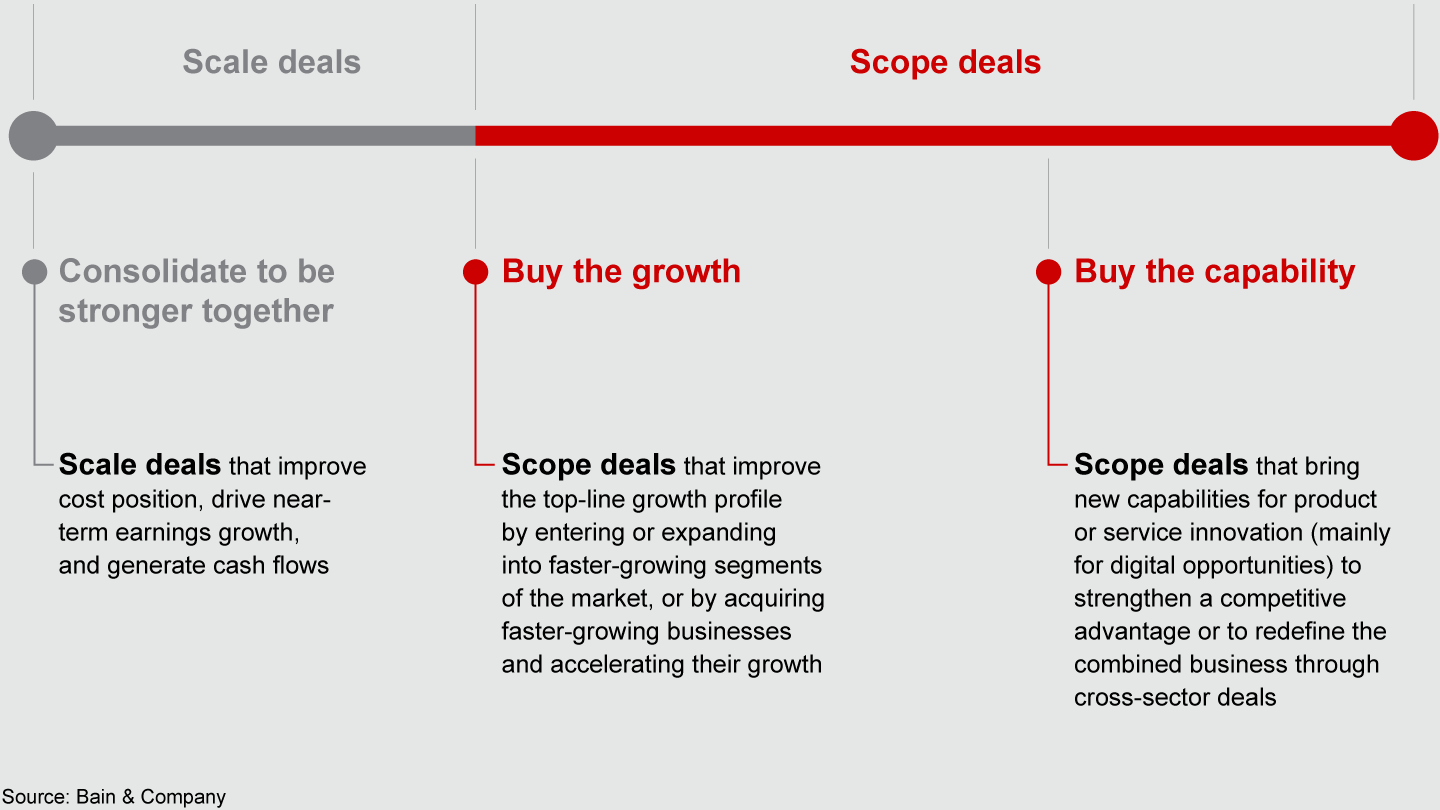M&A Report
 }
}
Auf einen Blick
- After a strong first half of 2022, the market slowed in the second half, although fundamental deal activity persisted.
- Declines in multiples and a midyear pause in megadeals were the key contributors to a 36% decline in deal value in 2022 from a record high in 2021.
- Geopolitics, regulation, and other external factors also continued to impact deal activity patterns.
This article is part of Bain's 2023 M&A Report.
The year 2022 was a tale of two halves. After a blockbuster year for M&A in 2021, the first five months of 2022 reflected continued strong dealmaking activity. The big turning point occurred on June 16, 2022, when an interest rate hike by the US Federal Reserve Bank, combined with heightened macroeconomic uncertainty, put a chill on the deal market. Megadeals greater than $10 billion went on pause while smaller deals slowed. Deal multiples tempered. The midyear correction resulted in a 36% decline in annual M&A deal value, to $3.8 trillion (see Figures 1 and 2). Yet volumes dropped by only 12%, suggesting resilience and commitment among dealmakers.
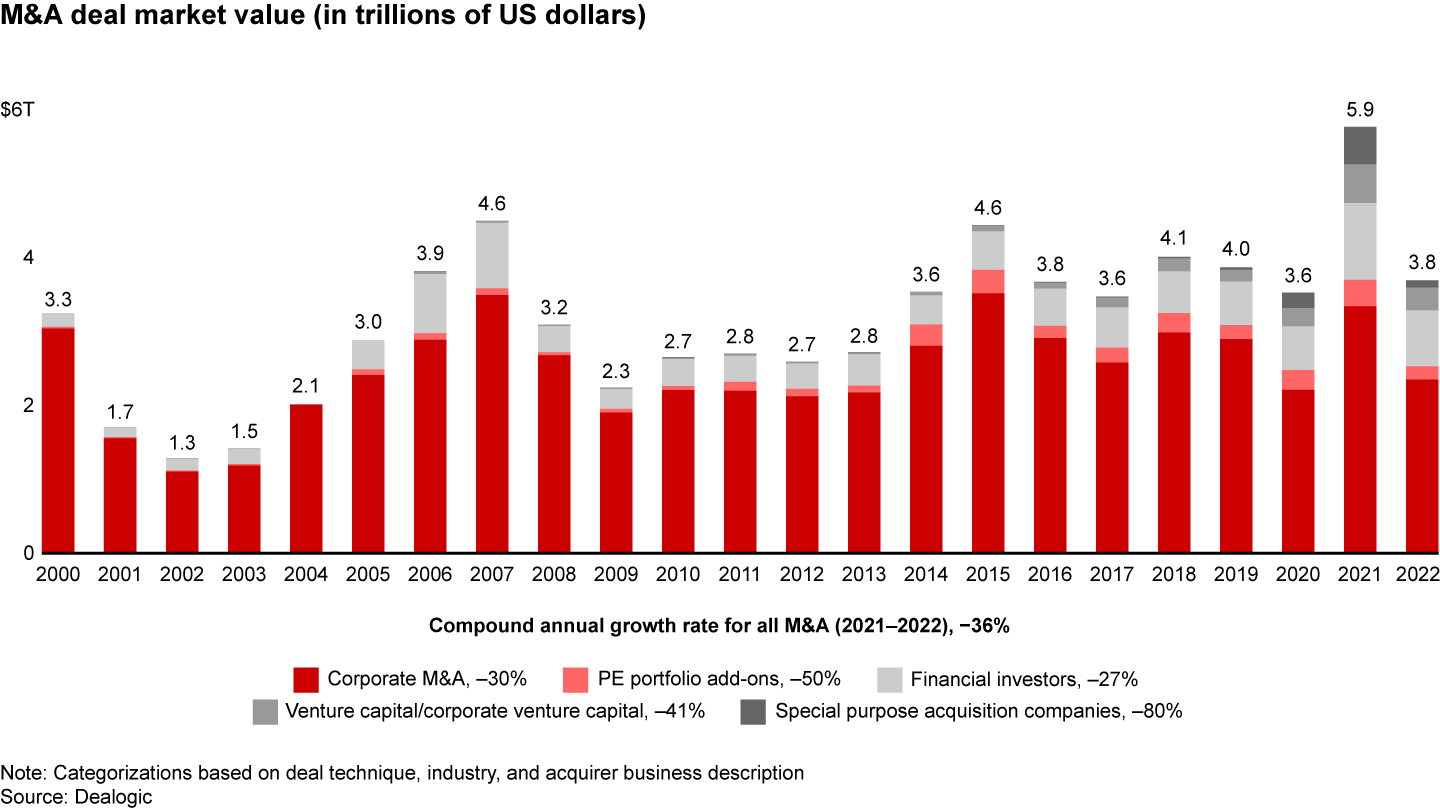
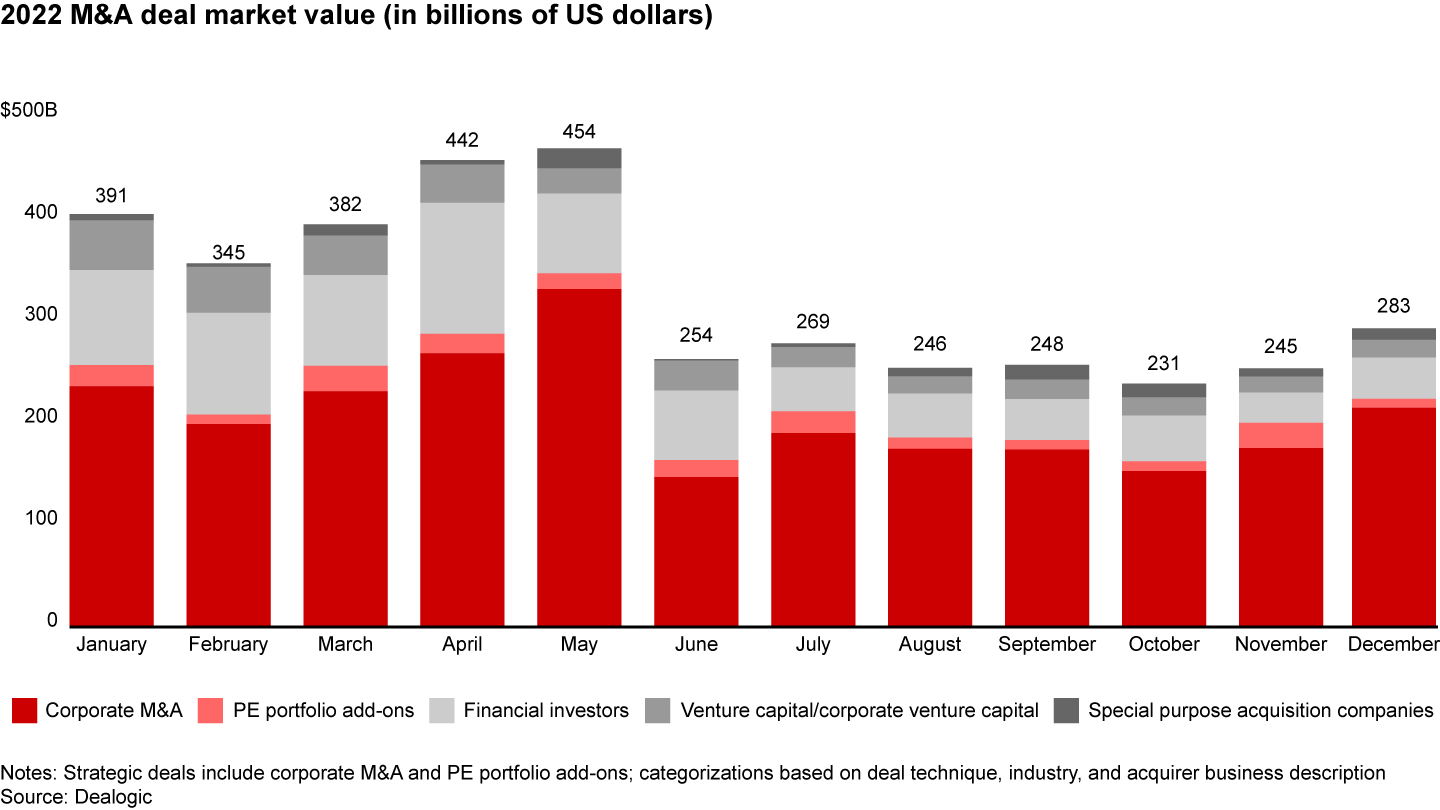
As the market reset, we observed some unanticipated shifts in dealmaking and, at the same time, a persistence of longer-term trends. On the one hand, the sudden drop in megadeals and deal multiples reflected the impact of structural uncertainty on M&A. Yet M&A remained central to corporate strategies for growth and profitability as evidenced by the relatively consistent levels of deal volume and balanced mix of scale and scope deals.
Structural uncertainty
Inflation, interest rates, capital availability, industrial policy, national security, geopolitical tension, supply chain uncertainty—in 2022, dealmakers faced new levels of volatility everywhere they looked as well as risks from variables that previously weren’t a focus in many deal models.
June’s interest rate hike marked a new phase in the era of capital superabundance. In the face of rising inflation, the Fed’s move to raise rates happened more quickly than many expected. The implications were felt internationally as other central banks followed suit. The role of the US dollar in global trade amplified the impact. Dealmakers across the globe suddenly confronted an unfamiliar unknown—namely, the cost and availability of capital—amid a weakening economic environment. After decades of low and predictable interest rates, however, acquirers told us they were shaken less by the rising cost of capital and more by the uncertainty they now faced.
In the US, the Fed’s move to raise rates happened more quickly than many expected.
The interest rate warning shot impacted financial investors and strategic buyers differently. Private equity investors, reliant on debt for financing deals, were more immediately exposed to capital constraints and costs, which particularly impacted large deals. Lenders increased scrutiny on new offers as banks absorbed loan commitments that they could no longer syndicate. By comparison, corporates tend to be shielded from the near-term effects of interbank interest rate changes. Moreover, as we explored in our Global M&A Report Midyear 2022, corporates have more options to finance M&A than leverage alone—namely, stock and cash. Regardless, the new level of uncertainty about the economic outlook revealed by the interest rate hike led to a secular reset in M&A value and volume for all players in the second half of 2022.
Acquirers faced a variety of other external factors besides interest rate ambiguity. Inflation and the emerging recessionary environment challenged assumptions about base business trajectories for strategic acquirers and targets alike. Supply chain disruptions continued to impact the accuracy of projections, and industrial policy reemerged as a swing factor for sector economics. Western government responses to climate and geopolitical crises presaged shifts in corporate profit pools. In Europe, amid growing concern about the Russia-Ukraine war, the likely need to subsidize winter energy costs for consumers forced a pullback on funding for other social needs such as healthcare. In the US, the Inflation Reduction Act placed bets on renewables at the cost of fossil fuels, and national security concerns prompted a decoupling of the semiconductor industry from China.
Strategic dealmaking during an uncertain year
Despite a healthy start to 2022, the strategic deal market closed at $2.6 trillion, a 32% decline from the all-time high in 2021. Strategic deal volumes dropped 9% and continued to hold steady during the last few months of 2022, particularly in smaller to midsize deals (see Figure 3). Divestments held steady at 33% of deals.
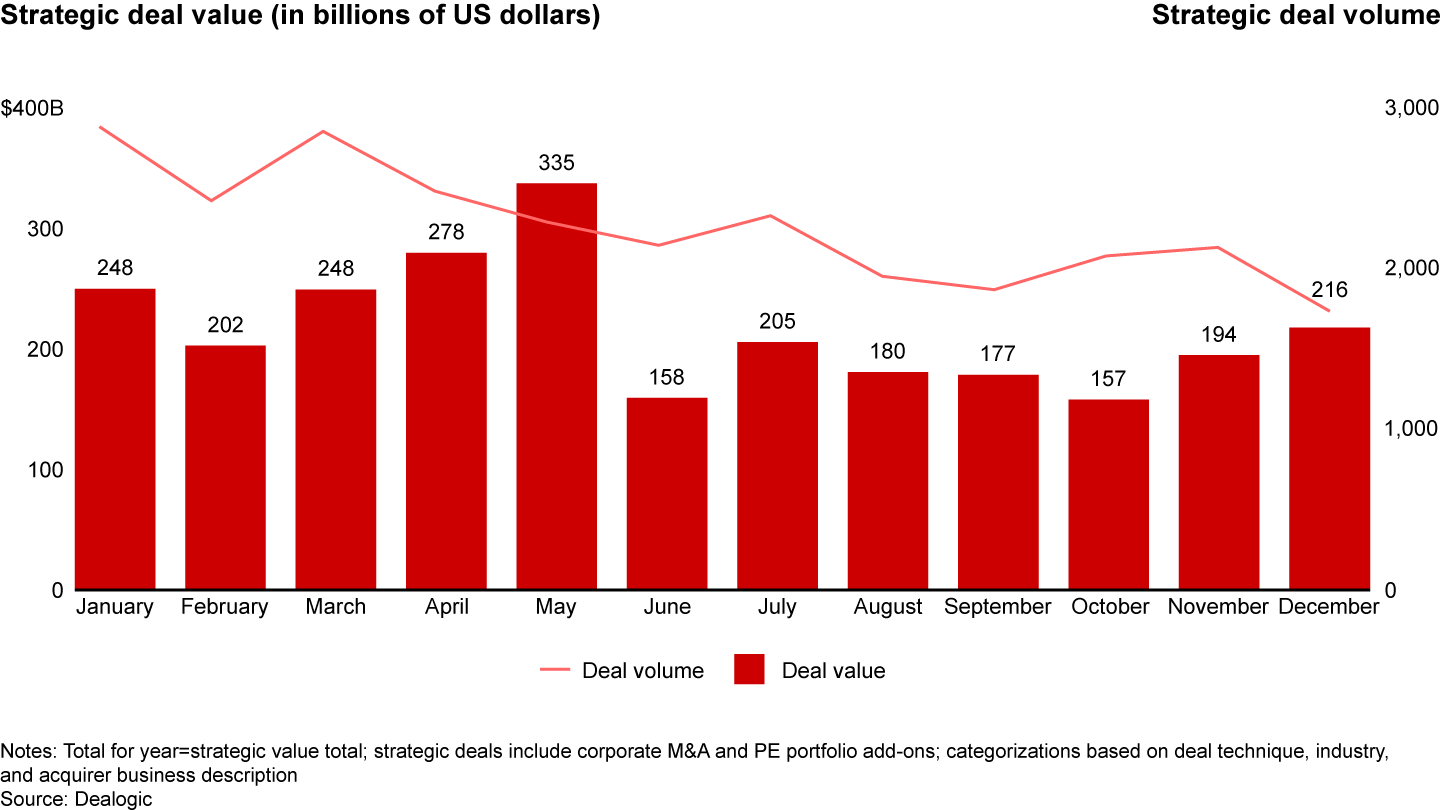
Deal multiples declined as higher discount rates caused companies to put a premium on near-term cash flows over long-term growth. Multiples fell from record highs in 2021 to a 10-year low median multiple of 11.9 times enterprise value to EBITDA (see Figure 4). The drop-off was most notable in the high-growth industries of tech and healthcare and life sciences—each fell by more than five turns (see Figure 5). It’s worth noting that this decline mirrored changes in public market valuations. For example, the S&P 500 was off by 20% during the same time period. M&A practitioners tell us that they respond to deal multiple volatility with lower valuations and changes to deal structure, but few are waiting on the sidelines for multiples to stabilize—as evidenced by sustained deal volume.
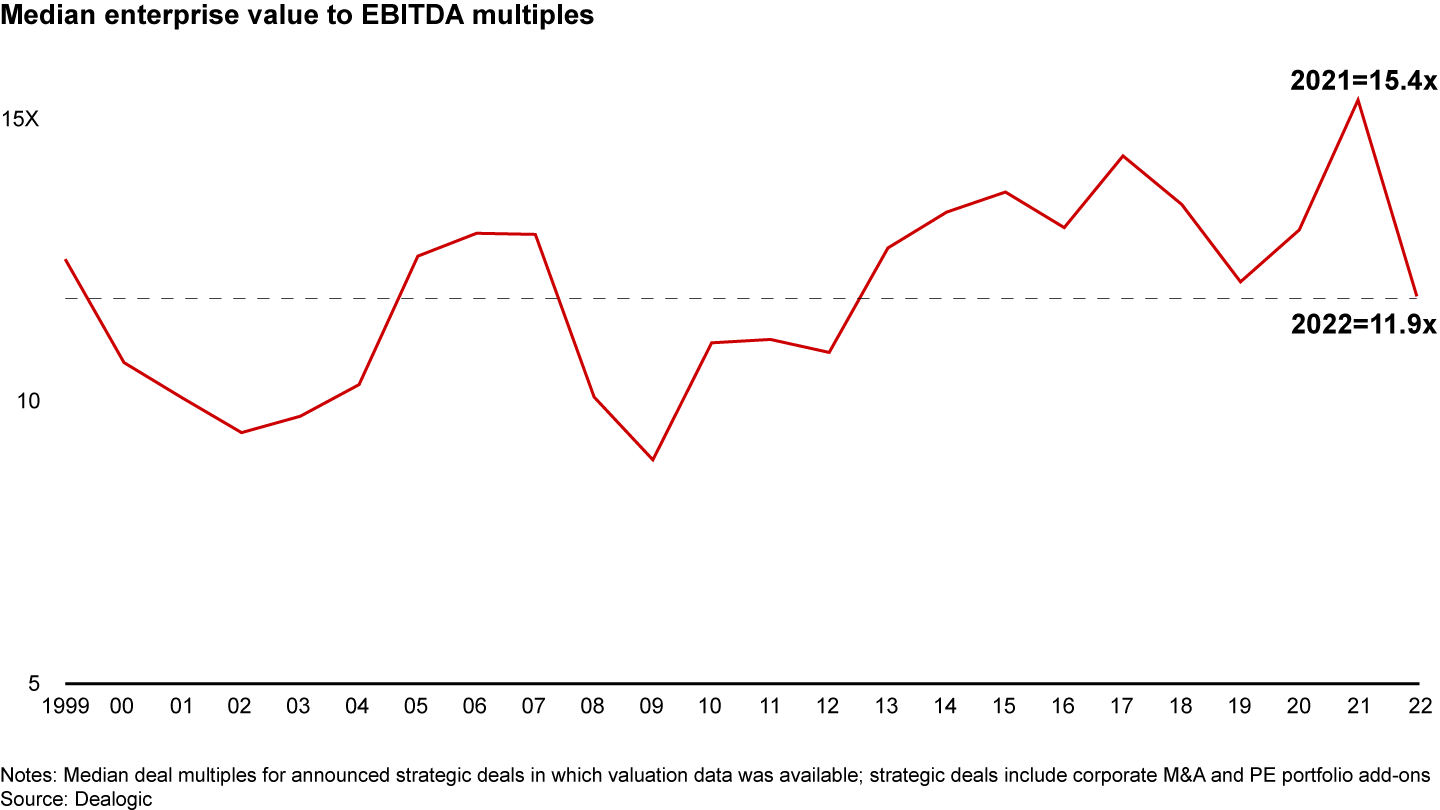
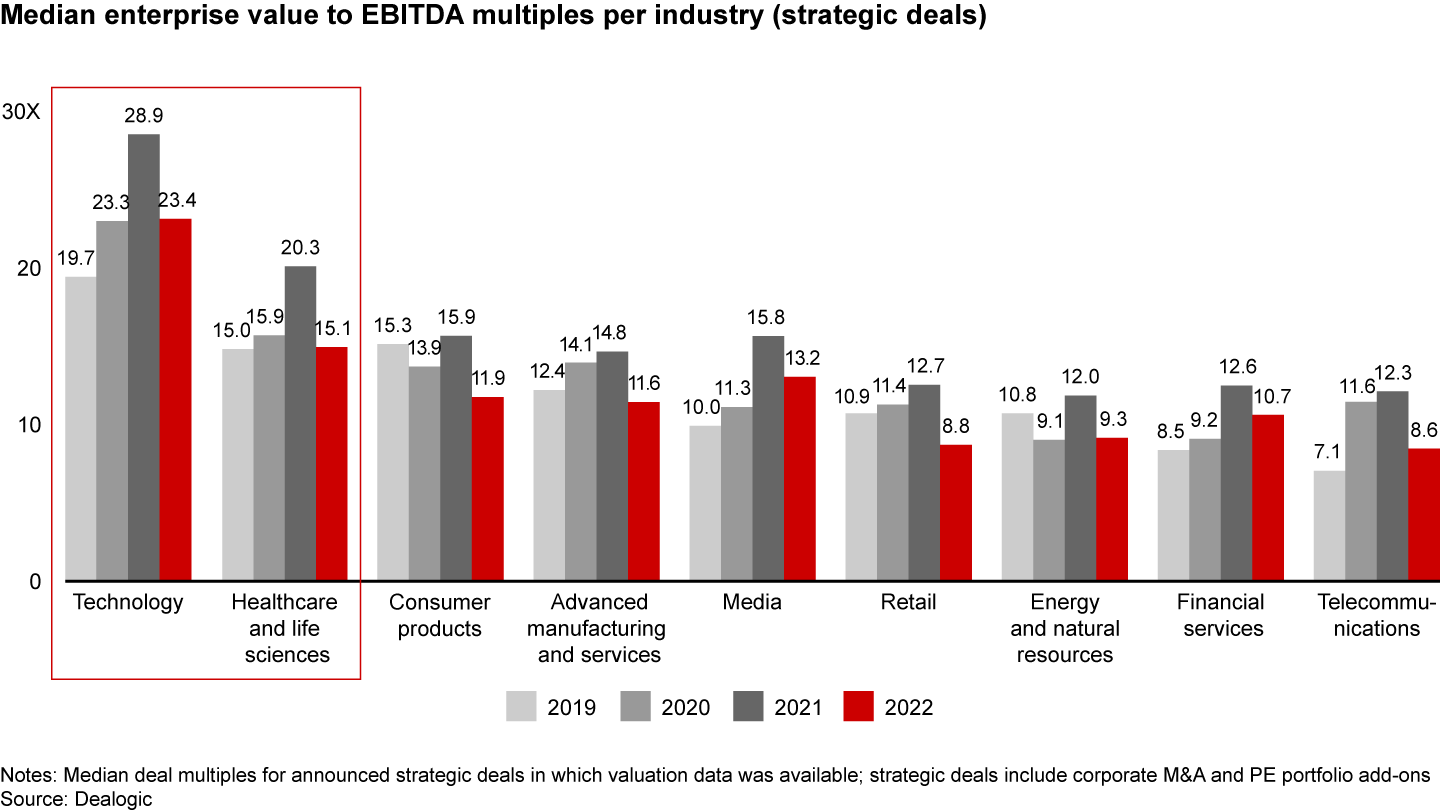
A midyear pause in megadeals (valued at more than $10 billion) also had a significant impact on total deal value for the year. The year began with more than a few headline deals such as Microsoft’s $69 billion bid for the gaming company Activision Blizzard, Broadcom’s $61 billion offer for VMware, and the Prologis-Duke Realty logistics real estate deal for $23 billion. After a blockbuster May, the strategic megadeal market dried up temporarily in June. The rest of the year saw a steady (if more moderated) pace of megadeals. The healthcare and life sciences sector led the way for large deals, with Johnson & Johnson’s nearly $17 billion offer for Abiomed, a medtech company; the $27.8 billion Amgen-Horizon Therapeutics biotech deal; and, most recently, the Novozymes-Chr. Hansen merger for around $12 billion (see the chapter “M&A in Healthcare and Life Sciences: Why the Industry’s Wait-and-See Days Will End”).
Few are waiting on the sidelines for multiples to stabilize.
Overall, large strategic M&A deals were nearly evenly split between scale and scope theses (see Figure 6). We believe, over the long run, the relative balance of scale and scope observed during the first three quarters of 2022 is consistent with the winning strategies of corporate outperformers—namely, a balancing of growth in revenue and profits. An examination of the largest deals reveals diverging sector dynamics and strategies. In 2022, advanced manufacturing and services, energy and natural resources, and financial services companies were most likely to strengthen their core business via scale deals (see Figure 7). For advanced manufacturing and services and financial services, this continues a focus on efficiency and operations via scale deals. Energy and natural resources companies, however, showed a new shift toward scope M&A as energy transitions prompted large renewables deals (see the chapter “M&A in Energy and Natural Resources: Beating the Odds in Energy Transition Deals”). Technology and healthcare and life sciences’ appetite for scope and capability deals remained constant as companies in both industries pursued top-line growth.
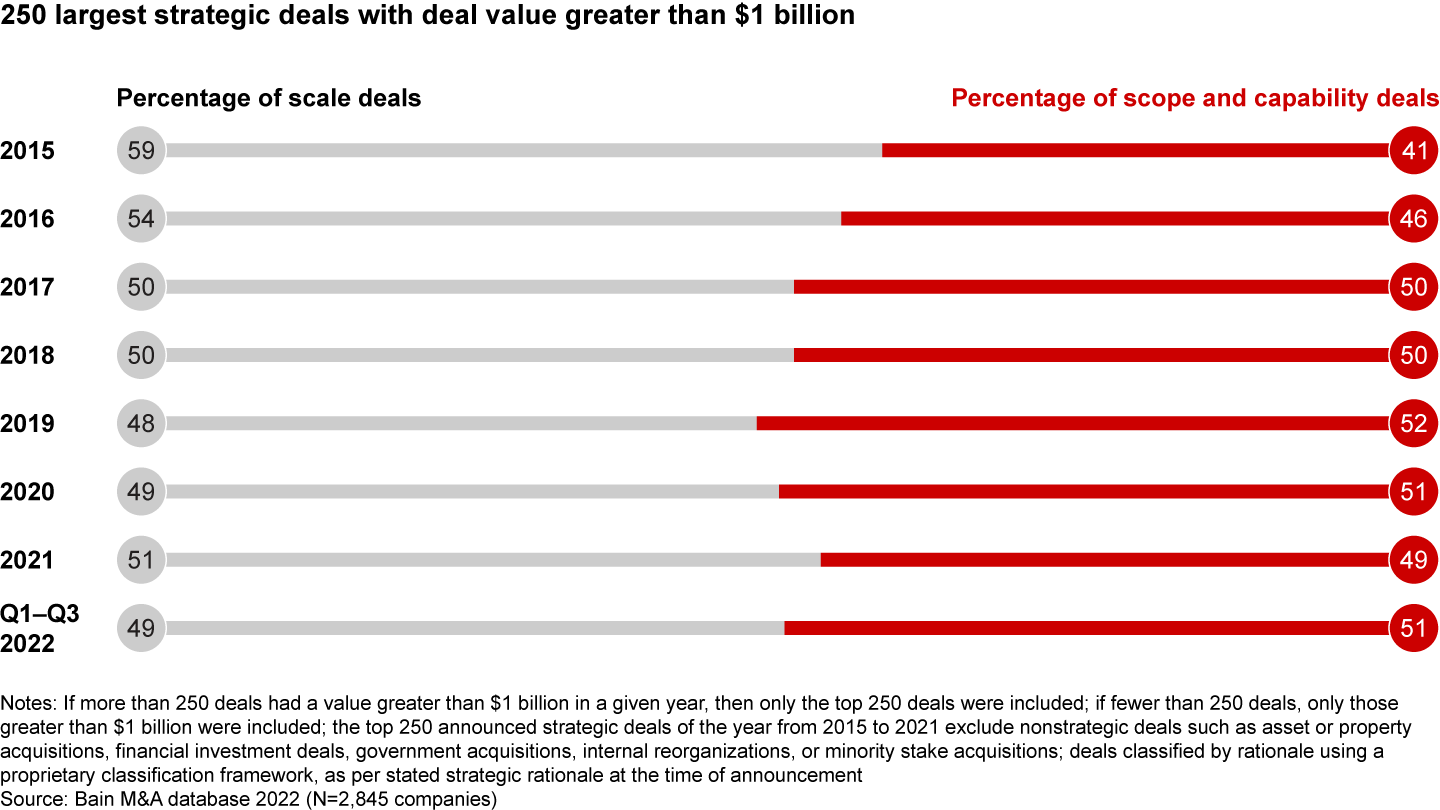
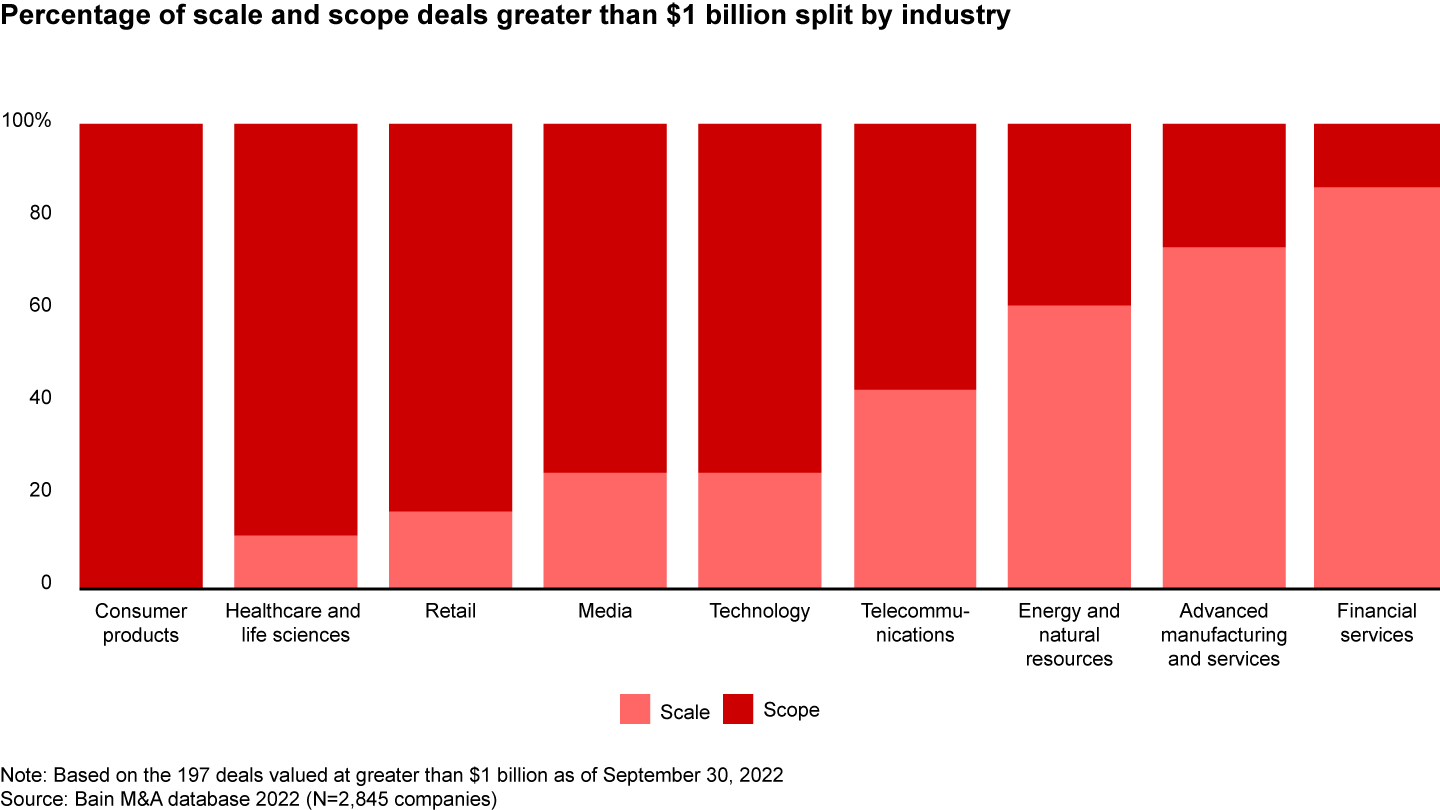
Taking a geographic lens, we continued to see a preference for in-region targets as supply chain shocks, China-US decoupling, and geopolitical risks focused acquirer attention on targets closer to home. Europe shifted to intraregional deals, representing more than three-quarters of deal value in 2022 compared with about two-thirds in recent years. Meanwhile, China and India remained largely domestic markets (more than 90% of value). In India, the most notable takeaway for the year was not flow directionality but rather the overall explosive growth in M&A. By the end of October, total deal value was nearly 140% higher than in all of 2021. The rest of Asia and the Americas held steady in their balance of target by geography.
The healthcare and life sciences sector led the way for large deals.
In 2022, the regulatory environment reflected the longer-term trend of increased scrutiny on antitrust and national security grounds. For example, regulators in the UK, Europe, and the US raised both antitrust and national security concerns about Nvidia’s scrapped purchase of UK semiconductor maker Arm. And in the US, the Biden administration has adopted a more expansive definition of “anticompetitive” and has been more likely to challenge large consolidation deals in court. Consider the successful case against Bertelsmann-owned Penguin Random House’s proposed acquisition of Simon & Schuster on the grounds that authors, not just consumers, would be harmed. While many scrutinized deals are ultimately approved, a longer pre-close period introduces the risk of deterioration in the base business and employee morale. On the margin, this risk may have tempered boardroom appetite for large transformative deals over the past year.
In the following chapter, “Looking Ahead to M&A in 2023,” we explain why savvy executives will keep their feet on the M&A accelerator even as competitors slam on the brakes.
